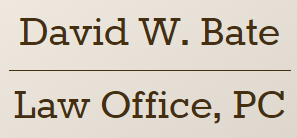Emotional distress claims are understandably tough to prove. Jurors, like everyone, prefer to think of themselves as resilient. They want people to simply get better when they are hurt or “tough it out.” Overcoming this societal prejudice takes more than a good argument. You need demonstrable proof. Take the following:
- Photographic records: Was the car accident, the injuries or the surgical scar more serious than normal? Visuals are more interesting than verbal descriptions. Photographs of a crushed driver’s side door or a swollen, stitched up knee give the jurors something favorable to occupy them during lulls in their deliberations.
- Counseling records: Mental health professionals can be your biggest ally on emotional distress claim so long as they do not try too hard to help out. Instruct your client not to mention Bangor ME personal injury lawyers, settlement or trial to counselors. If those concepts wind up in the counselor’s records, defense counsel will gratefully feast during cross-examination.
- Medical/medication records: General intake forms for each medical visit often will have a checklist that includes the emotional well-being of the patient. Instruct your client not to skip or minimize emotional states or adjusters and opposing counsel will minimize the value of the client’s emotional distress. Medications are decent indicators of emotional distress but only if the client stays on the prescription and goes off the prescription only with a doctor’s approval.
- Physical manifestations: Emotional distress often has side effects that will help a jury understand the seriousness of the claim. Ulcers related to stress that arose after the accident are a good example. Headaches are proof but they usually cannot be objectively confirmed. On the other hand, certain activities can help confirm headaches and anxiety that accompany emotional distress, like lost time at work, rekindling of bad habits (smoking, etc.), breakdown of relationships, etc.
- Bad acts beyond negligence: Pay careful attention to the details in the officer’s accident report. Is there anything to suggest wrongdoing on the part of the tortfeasor beyond mere negligence? Asking a jury to award emotional distress damages is easier if the defendant acted callous or uncaring at the scene of the accident or if the driver was intoxicated.
The most important issue is documentation of the etherealness that is an emotional distress claim. Instruct your client how to keep the issue alive with care providers. Just because a patient mentions that they are not sleeping or are more anxious because of an accident does not mean those comments will make it into the records, but it will at least put the provider on notice and their records will be less likely to kill an otherwise valid emotional distress claim.
 Thanks to our friend and blog author, David W. Bate of David W. Bate Law Office, PC, for his added insight into potential ways of proving emotional distress.
Thanks to our friend and blog author, David W. Bate of David W. Bate Law Office, PC, for his added insight into potential ways of proving emotional distress.
